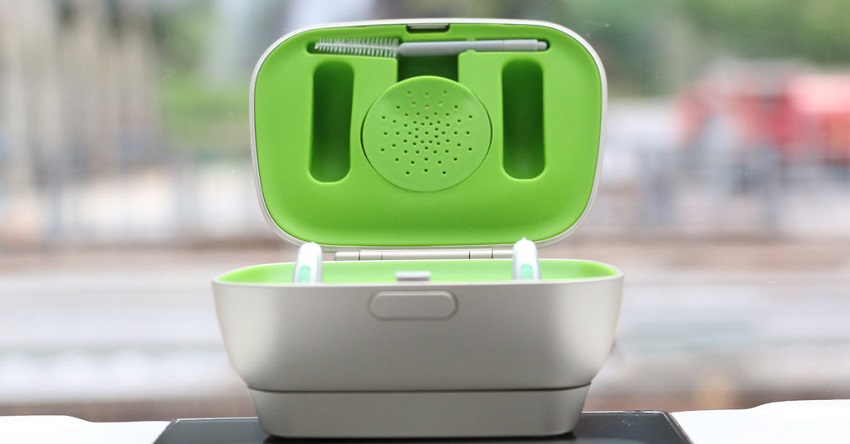When choosing a hearing aid, one of the first decisions you must make is whether to use disposable or rechargeable batteries. Understanding the benefits of each type will help you determine which one is right for you.
Rechargeable batteries are a great alternative to zinc-air batteries. They offer some benefits, including convenience, cost savings, and being environmentally friendly.
Save Money
The upfront cost of purchasing rechargeable hearing aid batteries is higher than disposable batteries, but it can be worth the money in the long run. You can save a few hundred dollars over the life of your hearing aids by using rechargeable options.
Savings can come in various forms, including replacing hearing aid battery types and sizes less often or dealing with shipping and handling costs. You can also find rechargeable batteries at a discount through a local hearing care center.
Another way to save money is by ensuring that you are using high-quality batteries. Using cheaper ones may be wasting your money and not getting the best performance out of your hearing devices.
Rechargeable batteries also tend to last longer than disposable hearing aid batteries because they are more energy efficient. They work better in cold weather, are more durable, and can hold more charge for a longer time when compared to traditional batteries.
Rechargeable hearing aid batteries are also safer than disposable batteries, as they are less likely to be swallowed by small children and pets. This is because disposable hearing aid batteries are made of corrosive and toxic materials, which can be dangerous to people.
Convenience
In a hearing aid context, convenience means reducing the number of disposable batteries you buy over time. This is because rechargeable hearing aid batteries have a much longer battery life than their disposable counterparts, making them cheaper to purchase over time.
Rechargeable hearing aid batteries are typically based on nickel-metal hydride (NiMH) technology. These batteries are time-tested and have been used for years in hearing aids. They are safe to use and can last up to a year before replacing them, although you may still need to charge them each evening.
Lithium-ion batteries are a recent development in rechargeable hearing aid technology and offer a more reliable power source. They are also faster to charge than older batteries and offer a long-lasting battery life.
However, the benefits of rechargeable hearing aid batteries can be tempered by some drawbacks. One is that they require you to remember to put them in their charging case every night, which can be difficult for some people. Another is that they are harder to repair than their old-fashioned disposable counterparts. Lastly, they must be returned to the manufacturer when they need to be replaced. This can be an added expense that some people would prefer to pay for.
Environmentally-Friendly
Buying rechargeable batteries for hearing aids is an environmentally friendly way to reduce the amount of waste sent to landfills. Disposable batteries have a very short shelf life and can contain toxic materials that harm soil and water quality when they’re thrown in the trash.
Rechargeable batteries are made with new-generation lithium-ion technology, which is much more durable than zinc-based disposable batteries. They can be charged multiple times and do not contain harmful toxins like cadmium, lead, and mercury.
Many hearing aids are now equipped with sealed batteries that prevent moisture and dust from getting inside the device. That can be very beneficial for users who struggle with dexterity issues or want one less thing to worry about regarding their hearing aids.
These types of batteries can last up to 19 hours, which is much longer than disposable batteries can provide. This efficiency saves people the inconvenience of always carrying backup batteries, which can be especially useful when you’re on a long trip or traveling with other devices that require power, such as your smartphone.
Longevity
The lifespan of your hearing aid batteries largely depends on how you use your devices and what technology they support. For example, streaming music or wireless connectivity can drain a battery quicker than listening to the radio or talking on a phone.
Longevity is also influenced by genetic, environmental, and lifestyle factors. Generally, people who take better care of themselves tend to live longer than those who neglect their health.
Another key factor affecting longevity is the type of batteries you use. Most rechargeable hearing aid batteries use lithium-ion technology, which offers much better power output than older nickel metal hydride batteries.
The average lifespan of a lithium-ion battery is up to five years before it needs to be replaced. This is a huge improvement over the short lifespan of earlier disposable batteries.
Lithium-ion batteries are also more durable and environmentally friendly than older nickel metal hydride batteries, which all major hearing aid manufacturers have phased out.
One of the best ways to extend the lifespan of your batteries is to wait until they are fully activated before placing them in your hearing aids. Zinc-air batteries have a plastic tab that keeps air from entering them until they are ready to be used.




